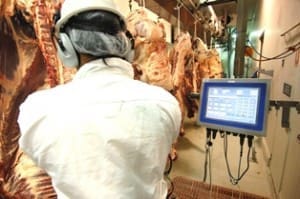BEEF kills across Eastern Australia are beginning to show an easing trend which is only likely to gather pace heading into August, and potentially September.
The seven-day, five-states tally to Friday reported this morning by NLRS was 134,244 head, down one percent from the previous week, and 2pc below kills in late June.
 While processors report bookings secured for this week look adequate, and current kills remain among the largest experienced this year (albeit historically low for July), its getting increasingly hard to secure bookings for later in July and early August, apparently.
While processors report bookings secured for this week look adequate, and current kills remain among the largest experienced this year (albeit historically low for July), its getting increasingly hard to secure bookings for later in July and early August, apparently.
Dry weather being experienced across large parts of eastern Australia is perhaps making the current supply position look better than what it really is, but any sign of worthwhile rain during August or early September would inevitably see slaughter numbers fall in an even bigger hole.
A big question now is how the market reacts if slaughter cattle availability does shorten as much as anticipated from August. Dropped time, either through reduced shifts, fewer cattle per shift, or outright closure for a number of weeks are all on the cards, especially for plants operating in the crowded southern processing market.
Grids steady
Queensland grid prices have shown no significant movement over the past seven days, with best offers from competitive processors in the southern regions of the state this week ranging from 515-520c/kg on four-tooth grassfed ox and 450-455c for heavy cows. This followed some 10-15c/kg downwards adjustments at the end of June as some operators re-aligned their offers with competitors.
A large northern NSW export processor grid has offers for kills this week of 505c for four-tooth heavy steer and 455c/kg for heavy cows.
In the south, yearling and export steer grids in Victoria have eased 5c/kg in the past week or so, with four-tooth heavy steer averaging 539c/kg and heavy yearling steer 0-2 tooth the same price. Heavy cows +300kg with 3-12mm of fat cover averaged 463c on Victorian grids last week, and in places higher.
One confounding point is the strength of the saleyards cow market in parts of southern Australian recently. Wagga, Forbes and Carcoar sale prices for cows have all been remarkably resilient over the past seven days, with some cows worth 500c/kg dressed weight equivalent, on the ground. That’s seen buying interest from more northerly processors, who still face a freight bill to get the cattle home, all but dry-up for southern cows at present.
Softness evident in feeder prices
As noted in last week’s report, feeder cattle prices have continued to soften across eastern Australia, partly in response to rapidly rising feedgrain prices, but also reflecting flat conditions in meat exports.
Good heavy flatback feeder steers in southern Queensland this week are worth 315-320c/kg liveweight, perhaps 5c better in places for Angus, and 5c less for cattle showing more indicus.
The earlier 5c drop in feeder values had little effect on supply. Feeders going into 100-day programs now are looking at October close-out, with one indicative forward contract price at a large southern Queensland shed for that period now at 555c/kg. That figure was still 575c/kg only a month or six weeks ago, but has slowly deteriorated since, in response to the very pessimistic meat trade outlook at present.
With the exception of US grinding meat prices, the outlook in export meat markets remain s very flat this week, with large volumes of product continuing to accumulate in cold storage. Price pressure in cheaper product is in turn starting to impact on some of the ‘prettier’ meat, including MSA yearling, trade sources say.
At some point, there’s going to be a potentially large disconnect between the buy price and sell price again, which can only lead to some sharp adjustments in slaughter cattle prices.
More on feeder prices in an upcoming 100-day grainfed breakeven report.
Queensland’s kill last week reached 71,455 head, slightly up on the week before, and all square with this time last year. NSW fell 4pc on the previous week to 31,232 head; Victoria eased 1pc to 20,190, SA fell 2pc to 6700 head, and Tasmania eased 1pc to 4670 head.
